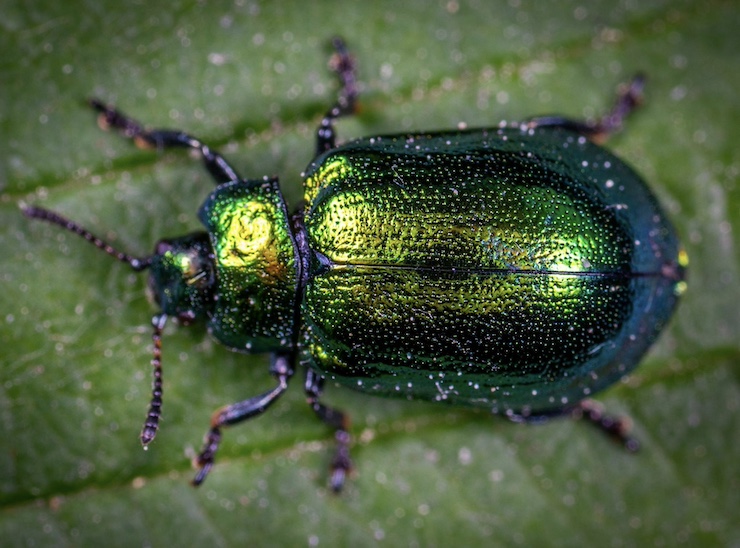
In 2002, scientists first identified an insect outside of Detroit in Canton, MI. A tiny, metallic green beetle, known as the emerald ash borer, was believed to have entered the country accidentally via cargo traveling from Asia. Native to Eastern Russia, Northern China, Japan, and Korea, females lay their eggs in the crevices of ash trees. After hatching, larvae feed on the tree from beneath the bark for upwards of 2 years before emerging as adults. In its native habitats, the emerald ash borer poses little threat to the natural fauna. However, outside of its natural habitat, the emerald ash borer has become an extremely invasive pest that causes massive destruction. As the larvae feed on the ash tree, water and nutrient distribution are disrupted, and the tree will die within 3-5 years. A tree can take several years to show any sign of infestation, which is how tens of millions of trees have already been lost to the emerald ash borer.
With advancements in technology, such as drones, scientists are hoping to get ahead of the invasive species. In 2020, a team of researchers from North Carolina State University began using drones to study green ash trees that seem to be resistant to emerald ash borer infestations. “We know there’s variation in genetics and we want to know if that variation could allow some trees to be naturally more resistant to the emerald ash borer than others,” said project leader Kelly Oten, an assistant professor in NC State’s Department of Forestry and Environmental Resources. “Using the drone, we hope we can easily spot trees that are surviving or dying more slowly, and then try to understand how and why, and if we can use them for restoration purposes.”
The images and geospatial data collected by the drone are then entered into a computer program to create a detailed map of the region. The process will be repeated over the course of a few years to compare results. Oten and her team are looking for trees that remain healthy amongst infected trees. She believes that these trees may have protective traits that allow them to survive. If certain trees possess these traits, they can be used to propagate healthy ash forests.
Earlier this year, Department of Ag Forest Health Specialist John Ball and Master’s Student and Horticulturist Tanner Aiken of South Dakota State University also began using drones to help curb the spread of emerald ash borers. Using a drone with an infrared camera, Ball and Aiken are able to see minute changes in the coloration of ash tree canopies, an indication of infestation. Aiken explained that using the drone allows him to “see a tree over here that looks a little suspect. This is a good example because this is a tree you might not be able to see from the street, so if you are a city forester or a curious arborist and you are looking to see where is EAB, in this area this tree would be one that you couldn’t readily see driving around, but we can see it plain as day with the drone here.”
The same process is being conducted throughout Boulder, CO with the help of Spectrabotics, a company that specializes in using drones for data collection and analysis. “There are two things we’re looking at: species identification so we can separate the ash trees from the elm trees from the silver maple. And then we can also do health assessments so we can look at how healthy are the leaves, how healthy is the leaf structure and then be able to determine whether it’s stressed from water, lack of nutrients or infestations,” said Tim Hayne, CEO of Spectrabotics. In Colorado, South Dakota, and elsewhere, once a tree is identified to be infected, treatment measures can be taken to possibly save the tree as well as stop the infestation from spreading.
In the face of the devastating impact of emerald ash borers on North American ash trees, drones have emerged as a crucial ally in the battle against this invasive pest. From identifying resistant tree species to pinpointing infestations early enough for effective intervention, these technological advancements promise not only to mitigate current losses but also to safeguard the future of ash tree ecosystems. As researchers refine their methods and expand their efforts across different regions, the hope is to harness these tools to preserve the ecological integrity and economic value of these vital arboreal communities.
|